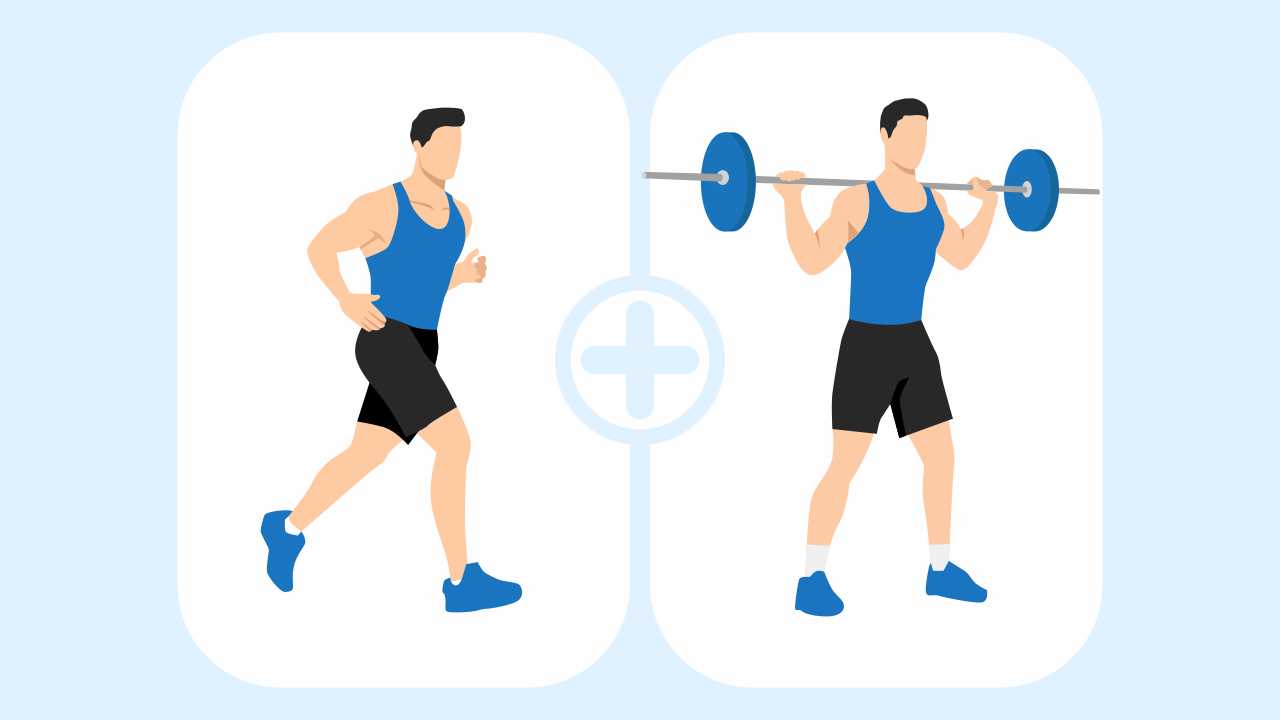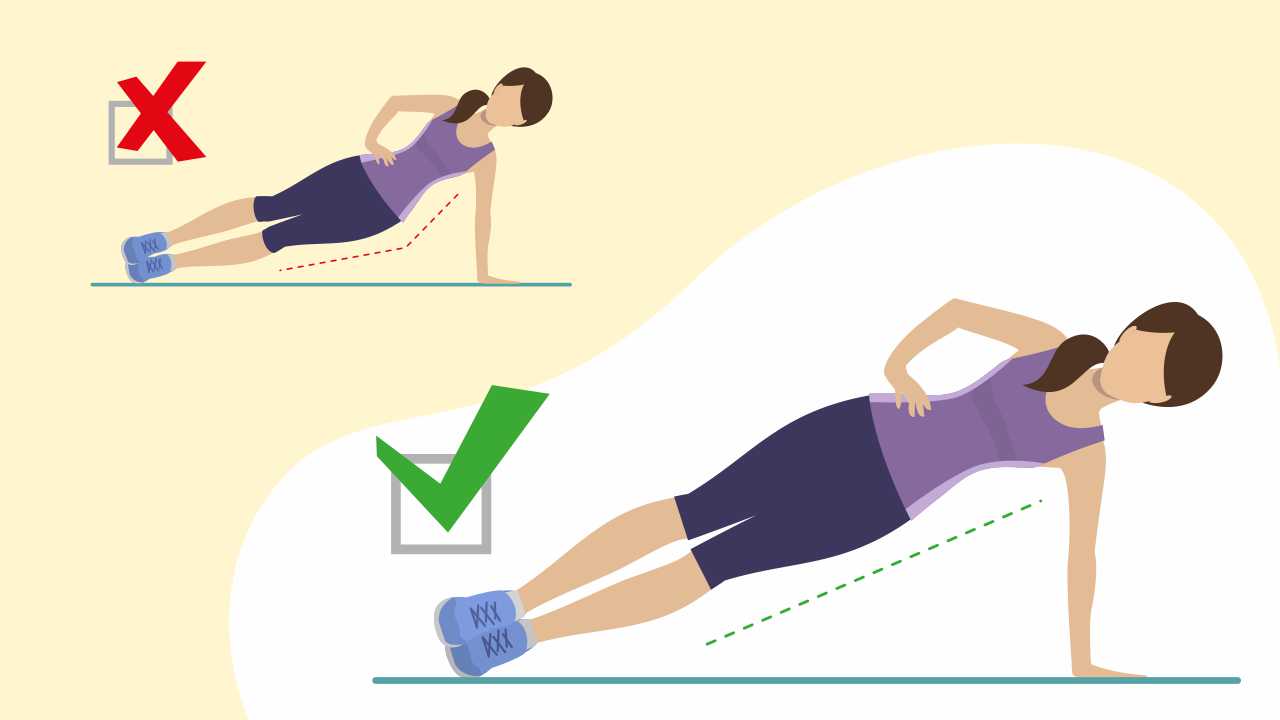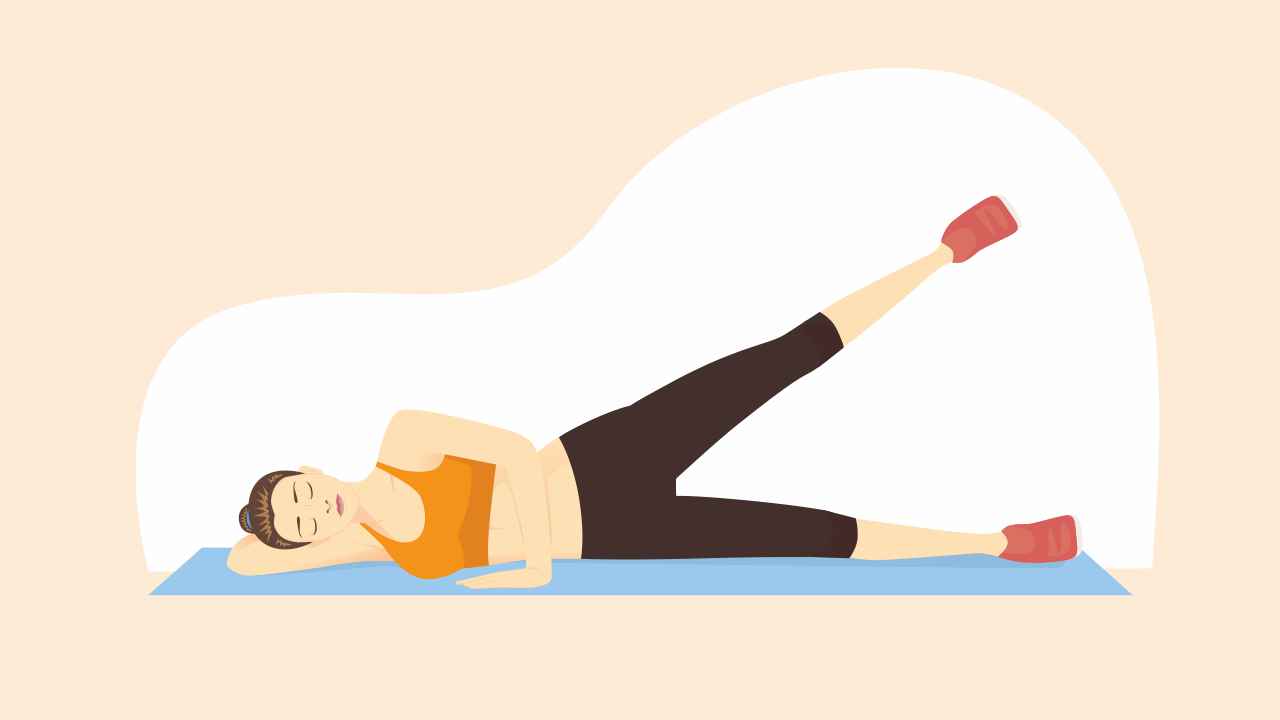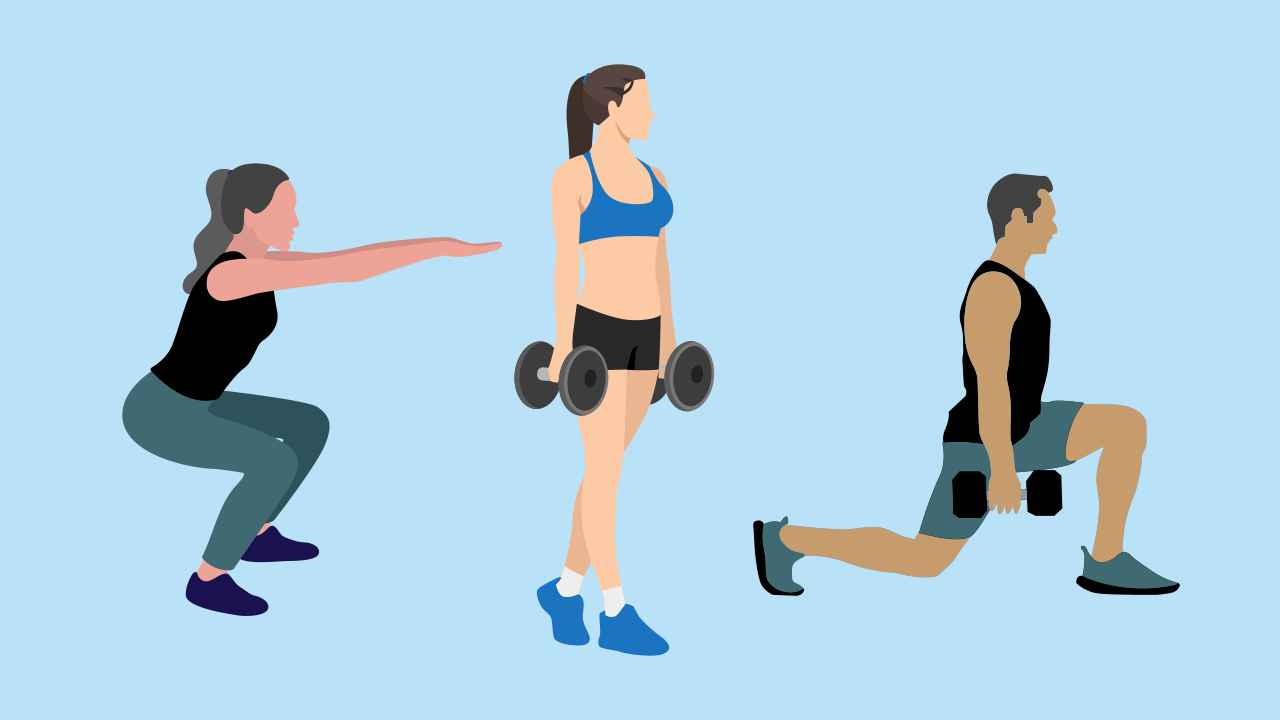
Machine-based or Free-weight Exercises: Which One to Choose?

In any commercial gym setting, it is common to see specific cardiovascular training equipment, such as treadmills, cross-trainers, stationary bicycles, etc. for machine-driven resistance training. There are also free-weight tools like dumbbells, kettlebells, and medicine balls.
While these divided gym areas are often a design feature to boost the functionality of spaces within which the workout equipment is located, it is often challenging to decide which area and equipment are best-suited for different outcomes. Let’s find out the differences between machine-based and free-weight exercises.
Machines
Despite the simple utility of machine-based resistance exercises, individuals often avoid using them because there are misunderstandings about their functioning.
For instance, some machines can look ominous due to their grandiose size/ scale. However, generally, the user-friendly design aspects of machines allow them to be easily operated, whereby they can be customized via a pin-loading system, or simple adjustments may be made to the seat height
But why do these exercises in the first place? Well, the simple rule of machine-based exercises is that there is more restriction placed upon the range of motion, compared to free-weight training. This may sound like a disadvantage. However, with a limited range of motion, you can lift more weight or have more control in the movement. A prime example here is that of the Smith machine (Figure 1).

Figure 1. Smith machine
A Smith machine is a fixed rack, where the bar is normally attached to two upright guide rods that serve to keep the barbell level on a vertical axis. This means that the bar cannot deviate side-to-side or forwards-to-backward, allowing the lifter to concentrate more on the linear (concentric-eccentric) aspect of the movement instead of focusing on stabilizing the bar. This principle is broadly the same for all machine-based exercises with fixed axes, as shown below in Figure 2.

Figure 2. Example equipment for seated leg press (A) and seated chest press (B) exercises
Overall, these machines with fixed axes tend to give more stability to the movement, which makes them a valuable tool for rehabilitation settings, where uniform strength and stability are needed. In addition, often these machines have adjustable stops, ensuring that the bar or plate is prevented from moving beyond a certain point; you can check the orange circles in Figure 1 for reference. So, if you are worried that you do not have the strength to move the load for a given number of repetitions, the adjustable stops will catch the bar/plate once failure is reached. This is also an important point to consider when it comes to the prevention of injuries.
A few other machine-based exercise equipment that need to be further explored are cable-and-pulley systems and pneumatic (air-pressure) systems. The cable-and-pulley systems are extremely common in all commercial and professional gym set-ups. Usually, they allow for an increased range of motion while targeting a variety of joint angles during various exercises, as shown in Figure 3.
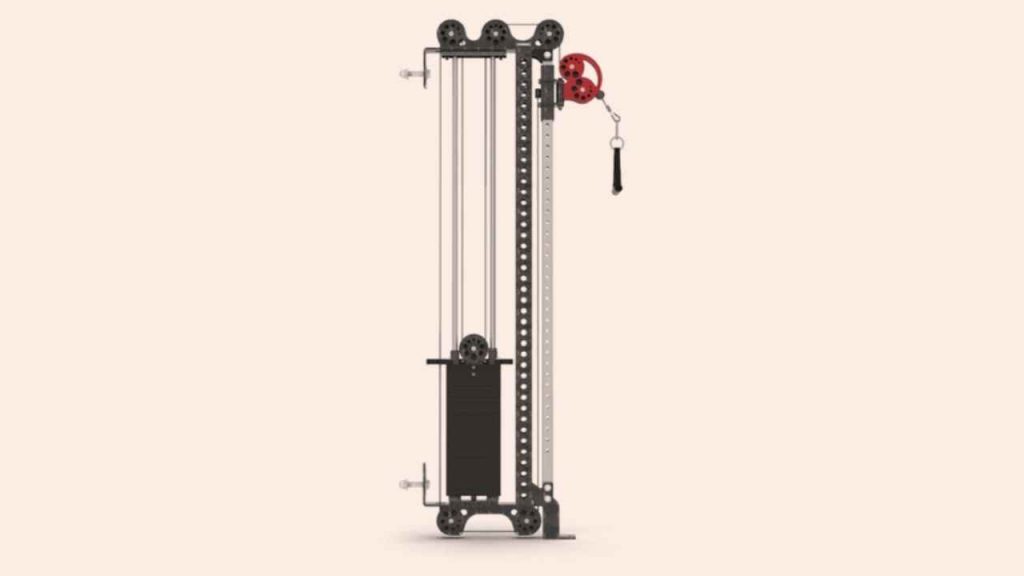
Figure 3. Example of a cable-and-pulley system. The weight stack (A) is pin-loaded and attached to a cable (B), which via several pulleys, terminates at the handle (C). The positioning of the handle can be altered (orange arrows) to provide different angles of the cable for various exercises
Conversely, pneumatic systems are less commonly found in commercial gyms. However, you may easily find them in rehabilitation, high-performance, or research-based clinics. These systems are shown below in Figure 4.
Also watch: Things to Know When You Start Lifting Weights | Strength Training for Beginners
With traditional weight stack machines, an unequal effort is required at different points in the exercise. Therefore, pneumatic systems that provide constant resistance via regulated air pressure allow for an equal effort through the range of motion. This results in a constant level of force production throughout the whole movement and the elimination of inertia. Limiting inertia means that you will not swing backward or forwards while moving through an exercise. This enables you to move smoothly through an exercise without joint strain or jerky movements that can cause pain or injury.
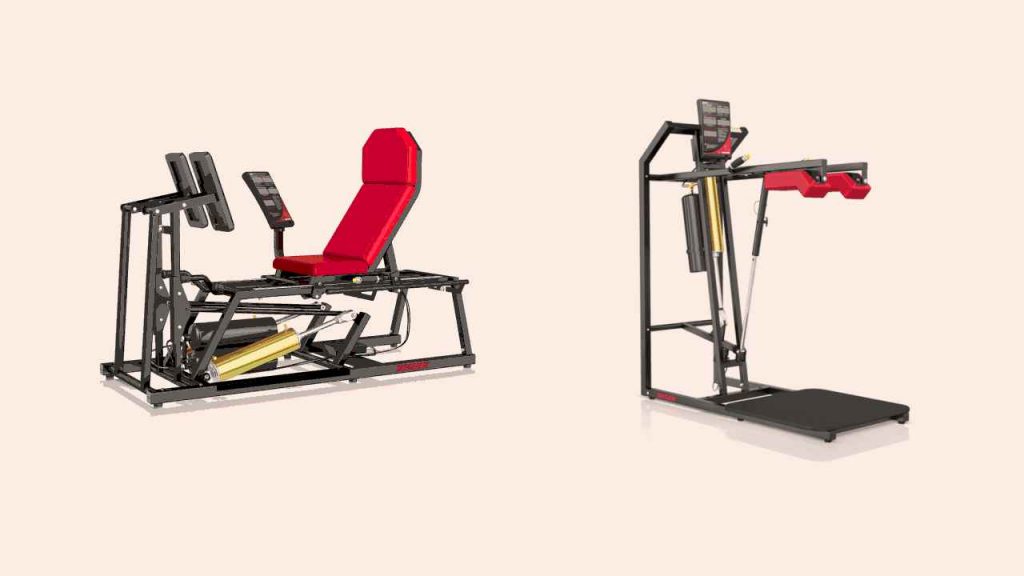
Figure 4. Examples of pneumatic systems for seated leg press (A) and squats (B)
A few cons of machine-based exercises, particularly fixed axes machines and pneumatic systems, include a lack of flexibility in terms of functionality. This means that often movements do not mimic functional or athletic activities. Moreover, machine-based exercises typically target and isolate a single muscle or a muscle group, which may negate the need for other muscles to act as assistant movers and stabilizers.
Lastly, machines are not always designed to fit the body shape or size of all individuals. People who are taller or shorter, or those with specific physical considerations, and/or obese people often cannot use machines with ease. It is for these reasons why people may prefer doing free-weight exercises.
Free-weights
Free-weights are inexpensive, portable, and easily adaptable to most movements or joint actions. The rationale of using free-weights is that they are open-chain. This means that these exercises include movements where the hand or foot is free to move. So, free-weights encourage more stabilization of the body, especially core and accessory muscle groups. Whole-body dynamic free-weight exercises, such as the power clean and snatch, are impractical using weight machines. Consequently, power and speed-based exercises are performed with the help of different forms of free-weights like dumbbells, barbells, and kettlebells, which have been shown below in (Figure 5).
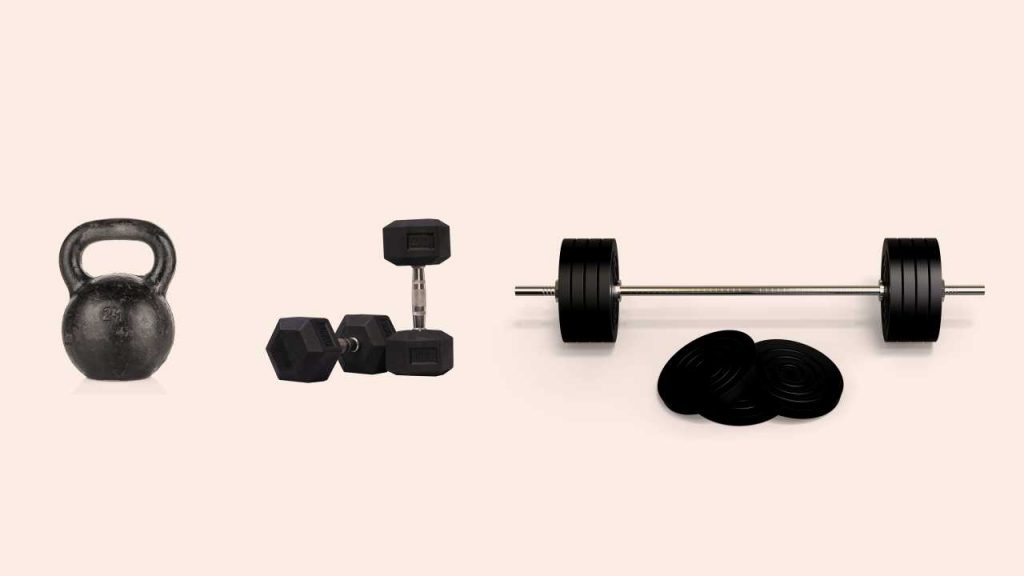
Figure 5. Examples of free-weights including kettlebells (A), dumbbells (B), and barbells (C)
There are some key plus points of working out with free-weights. Firstly, while machines have limited adaptability, free-weights can be used flexibly across your different strength and skill spectrums. So, free-weights can fill the gaps in strength and power across a wide variety of athletic movements.
You can perform a greater variety of large–muscle mass exercises with free-weights. In this context, free-weights can be advantageous in terms of providing time-efficient training sessions
One large–muscle mass, multi-joint exercise such as the squat-and-press can engage as many muscle groups as four to eight isolated or small–muscle mass exercises, thereby saving time.
Also watch: What Are the Benefits of Using Dumbbells for Training?
Thirdly, if the goal is to perform strength-based exercises that are mechanically similar to athletic on-the-field movement patterns, wherein sporting movements can be mimicked and trained, then free-weights can facilitate all of this in a better manner compared to machines.
However, free-weights also have some drawbacks. For instance, some movements like bench press and squats require spotters or special racks, which may be impractical in certain settings. Additionally, free-weights need more space for storage compared to a single-station machine. Also, these workouts require higher levels of balance and coordination and more control/ skill to perform, which may increase the injury risk. Lastly, some exercises such as leg curls, knee extensions, leg presses, and calf raises are difficult to do with free-weights.
When to use free-weights vs machines
Based on the available scientific evidence, which is scarce, it does not overtly appear that one training mode is superior to another. However, many coaches opt to anecdotally support the use of free-weight training over machine training for strength and power development. While this may be true for some individuals or athletic groups, such a broad viewpoint is fraught with considerable danger and is unsupported by any scientific proof.
As such, no hard and fast rule exists regarding when to use either free-weights or machines. Instead, it is advisable to plan your training around specific, targeted goals to reap more benefits
So, depending on the training goals, it is likely that both free-weight and machine-based exercises will be undertaken at some point in time, for mixed reasons and across a variety of applications. The following diagram illustrated here in Figure 6 may be a good starting point when considering both types of resistance training.

Figure 6. Flow chart of deciding on whether to undertake free-weight or machine-based resistance exercises
Now that you have an understanding of the pros and cons of machine-based exercises and working out with free weights, analyze them carefully and make an informed decision.
References
1. Santana JC. Machines versus free weights. Strength & Conditioning Journal 2001; 23: 67.
2. Haff GG. Roundtable discussion: Machines versus free weights. Strength & Conditioning Journal 2000; 22: 18.
3. Carpinelli R. A critical analysis of the national strength and conditioning association’s opinion that free weights are superior to machines for increasing muscular strength and power. Medicina Sportiva Practica 2017; 18: 21-39.





